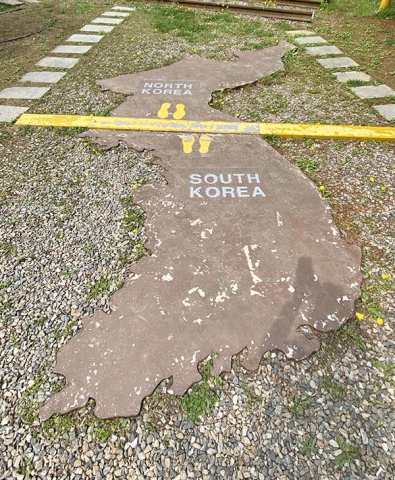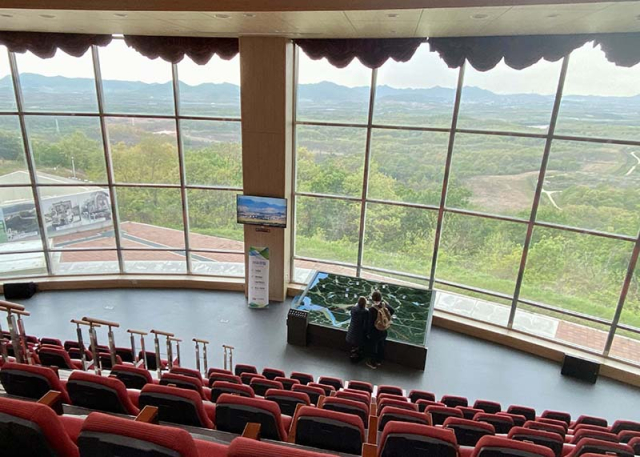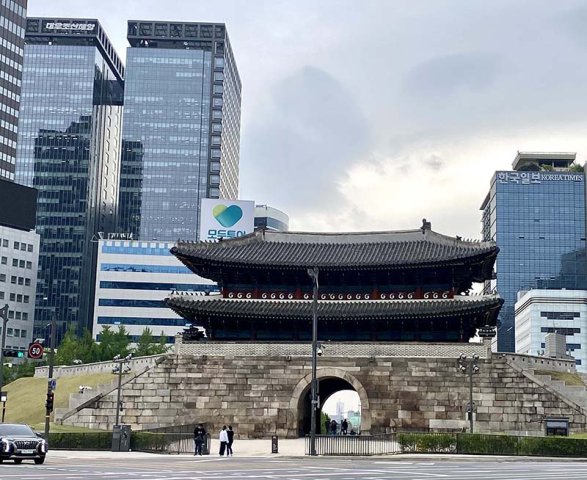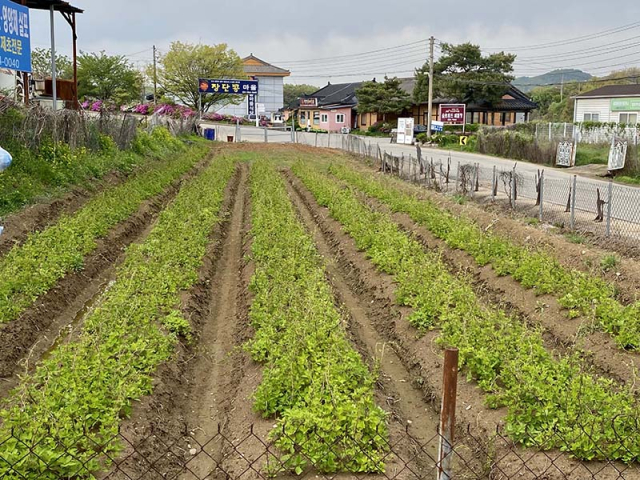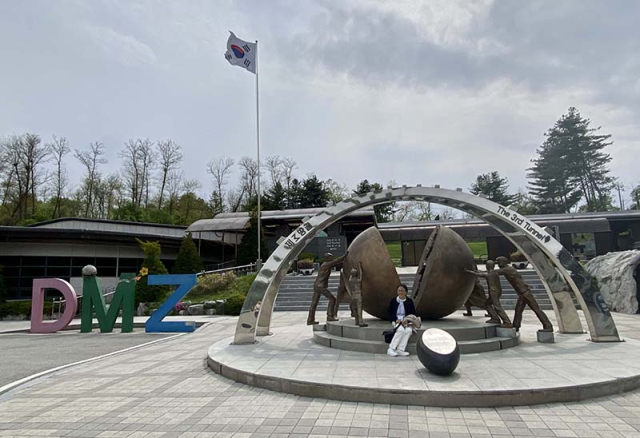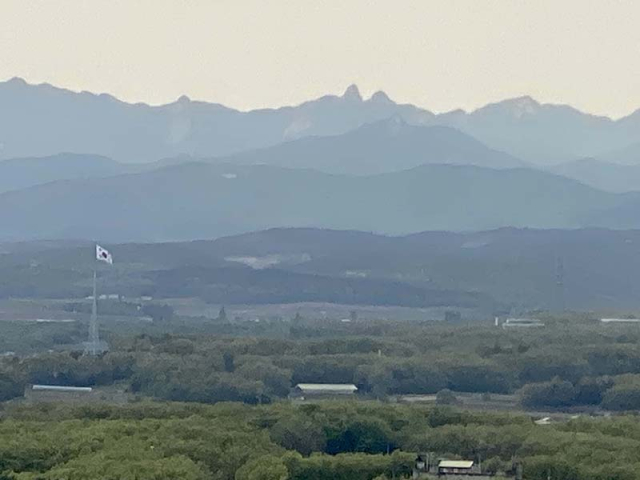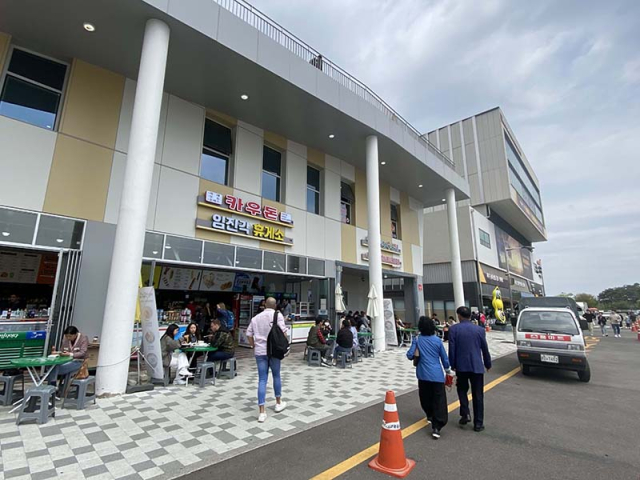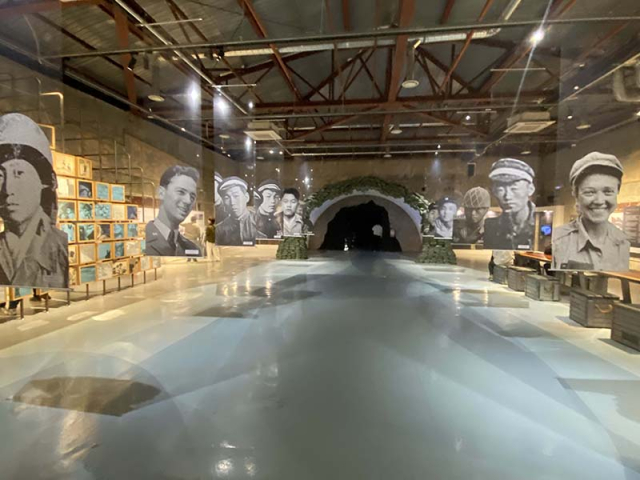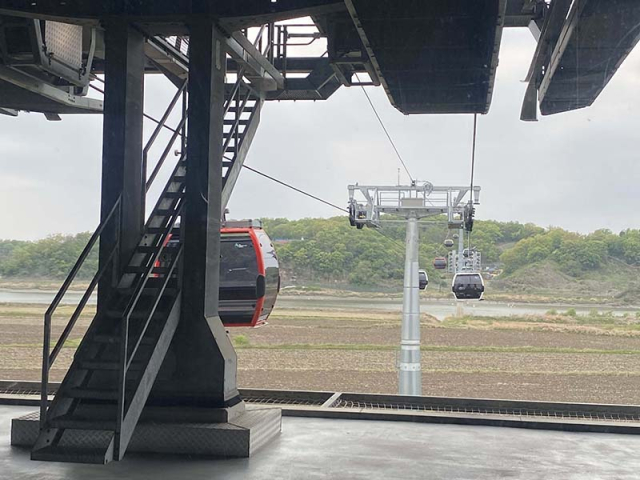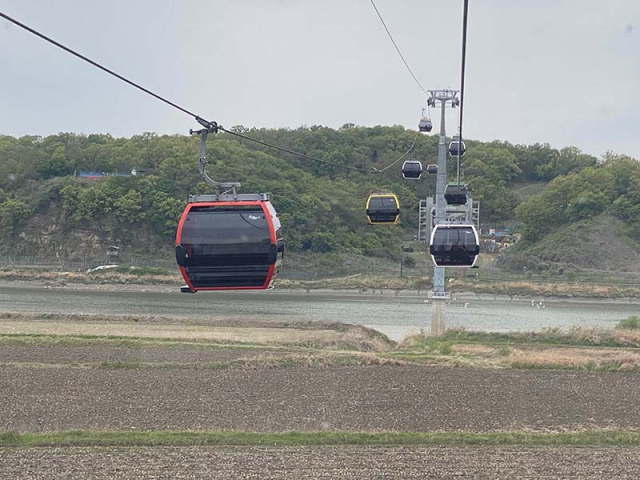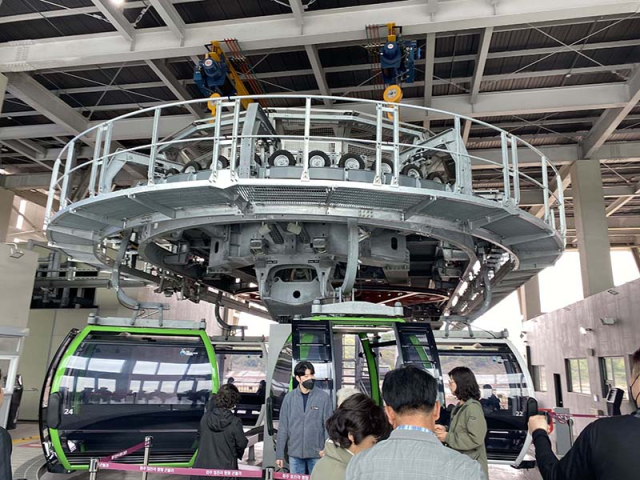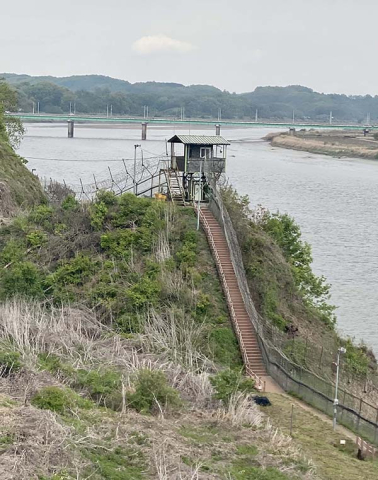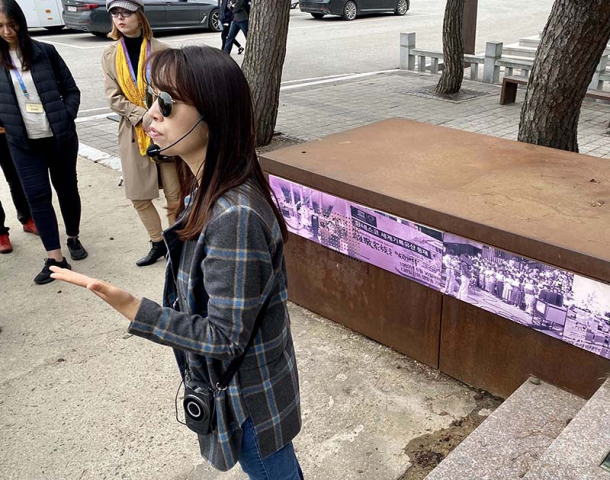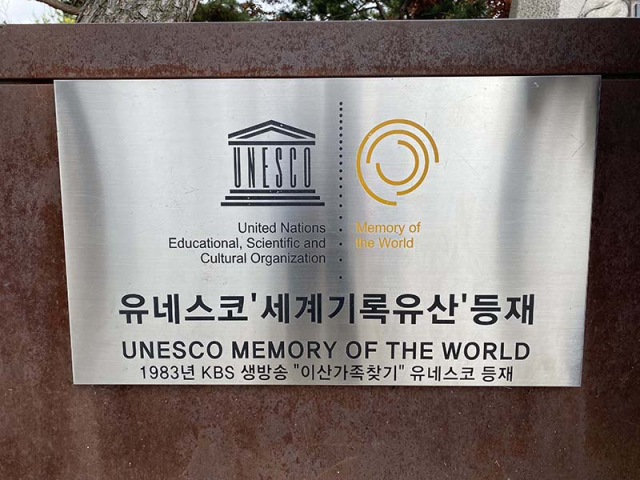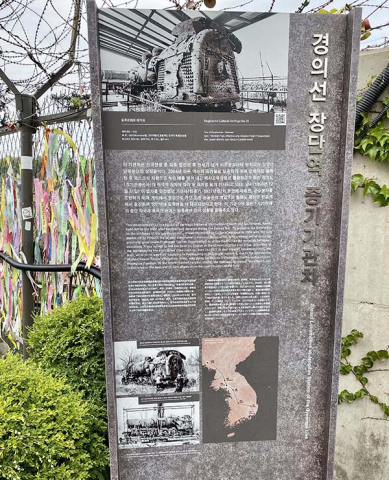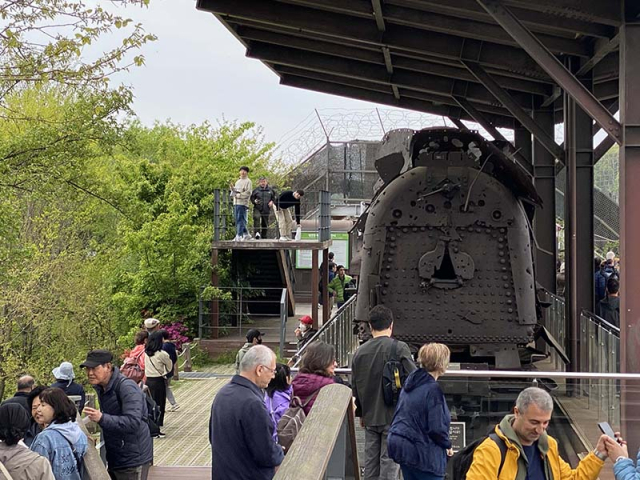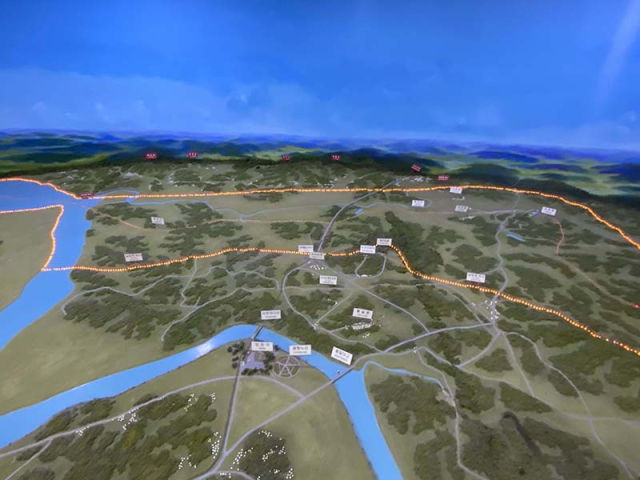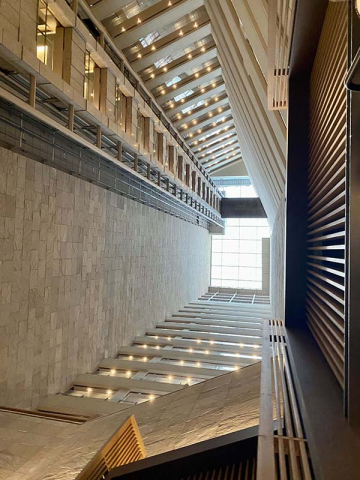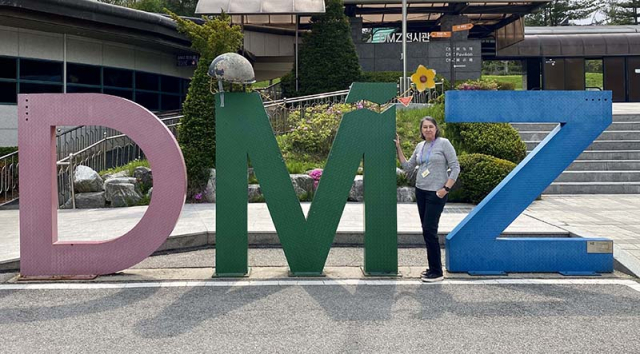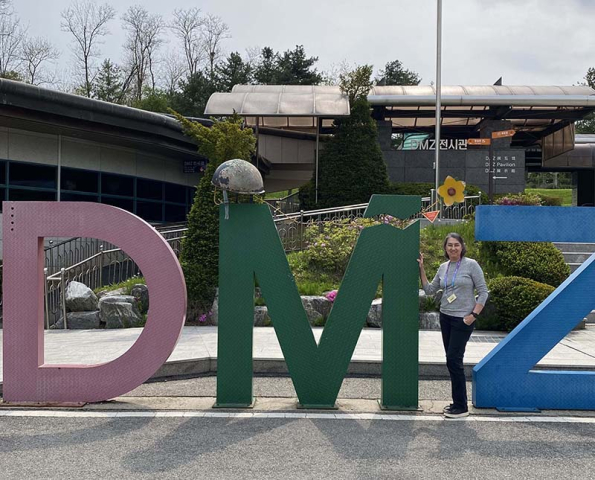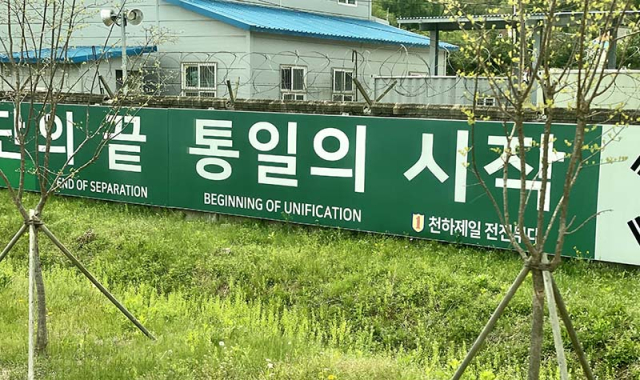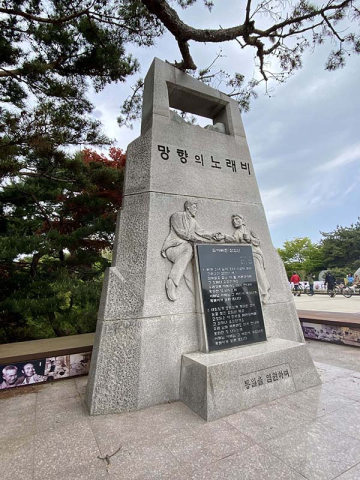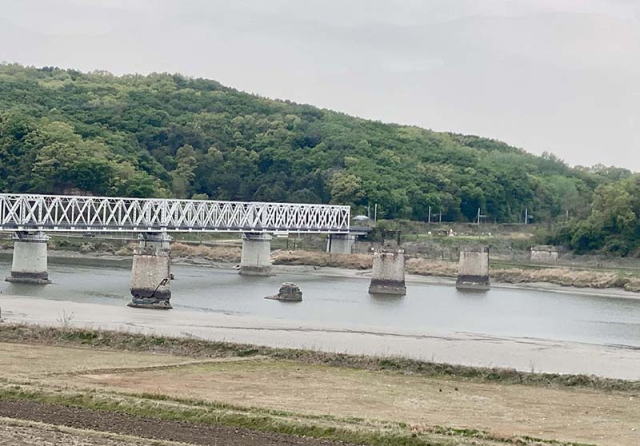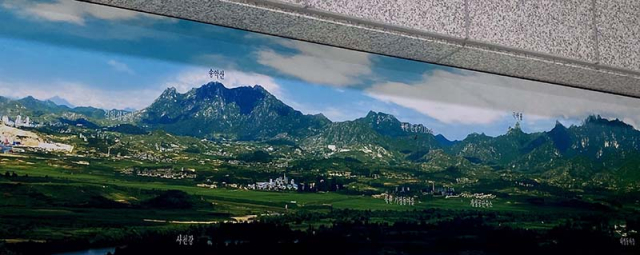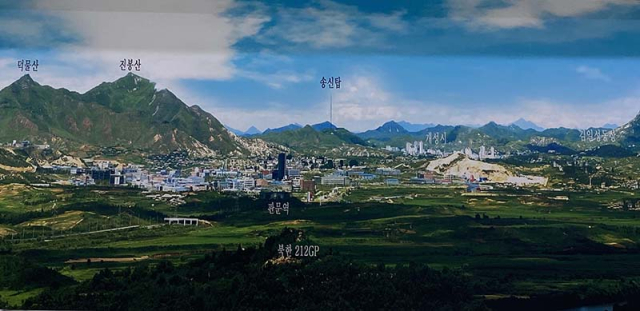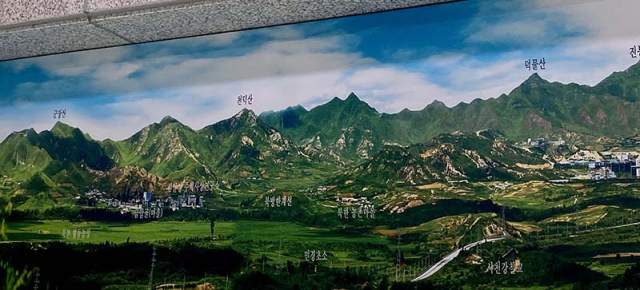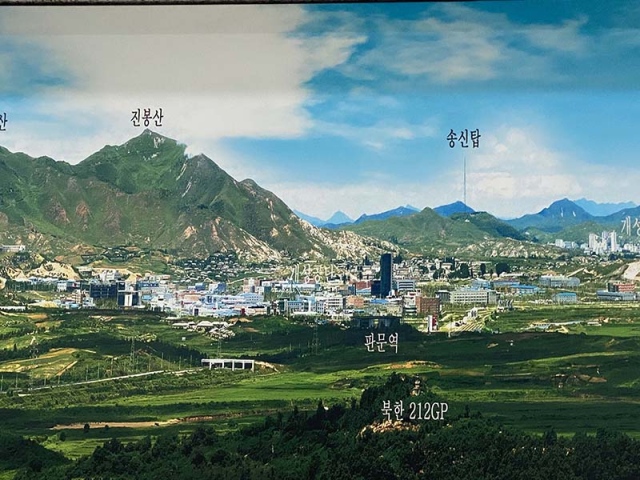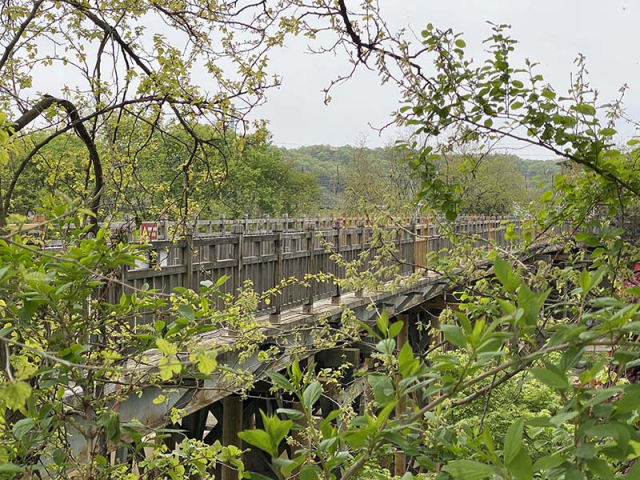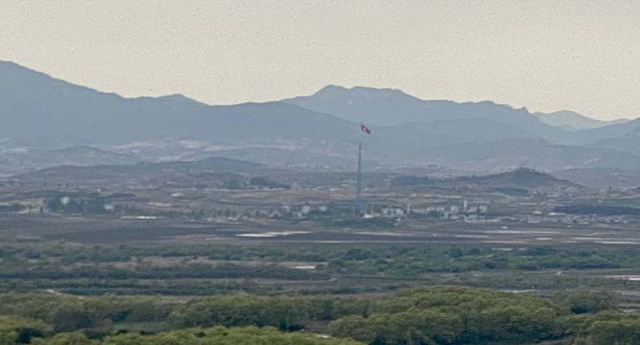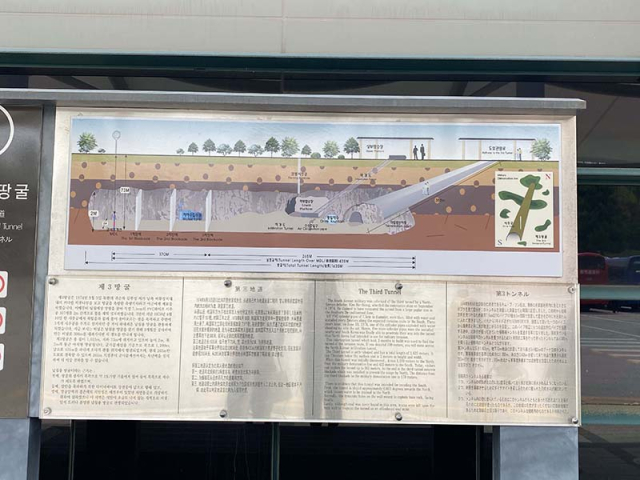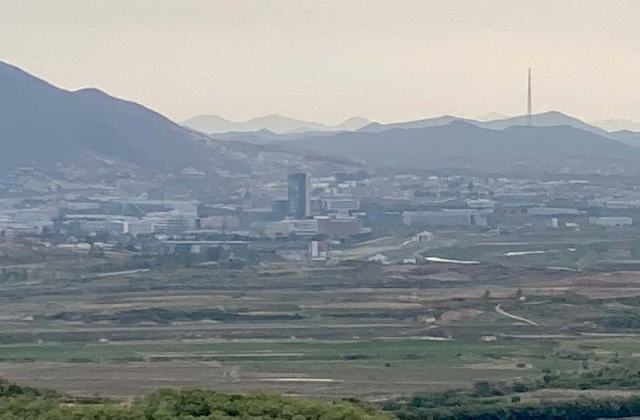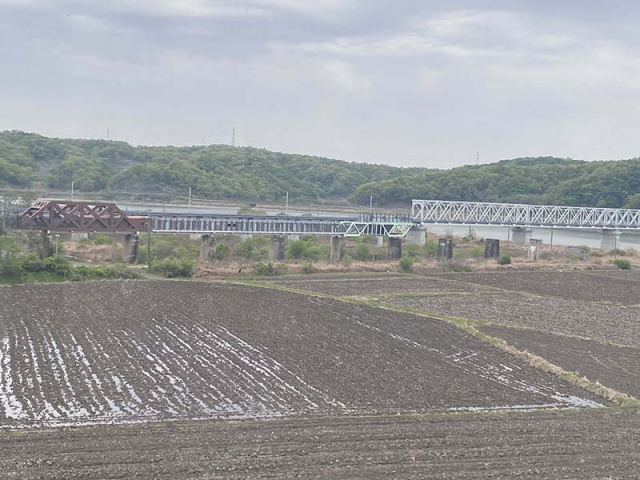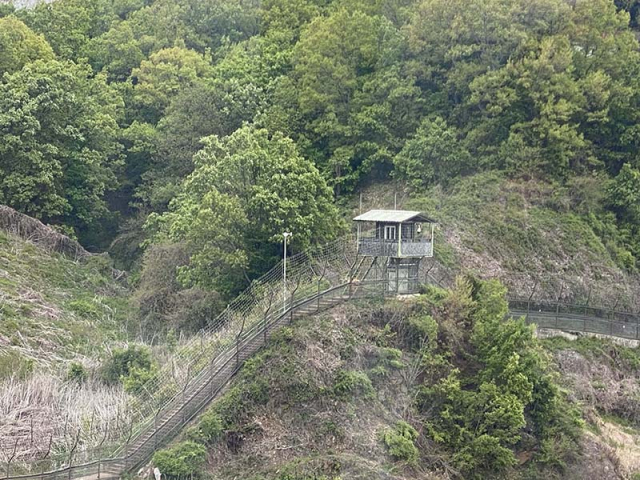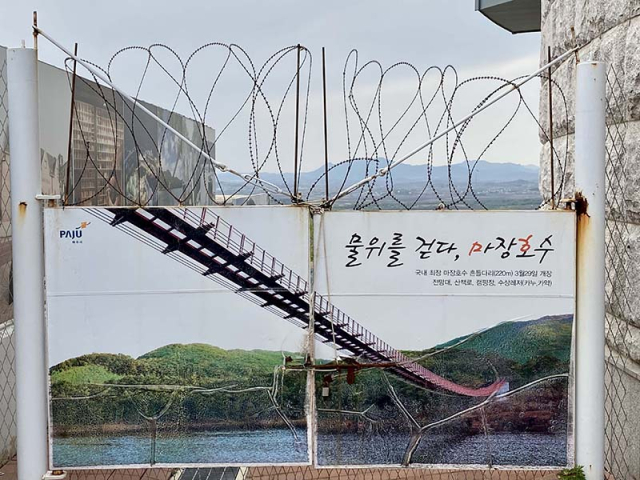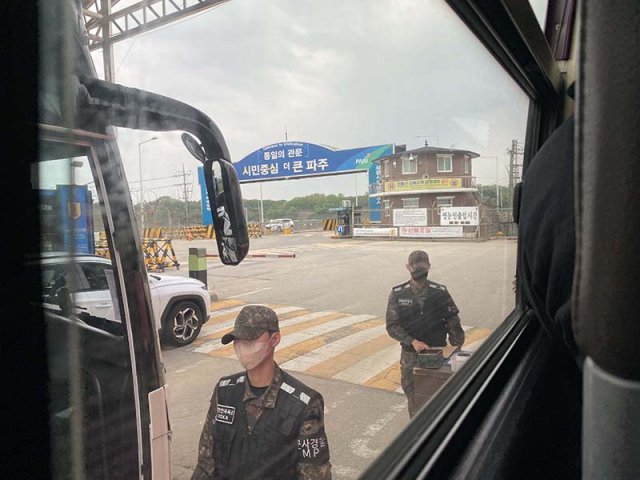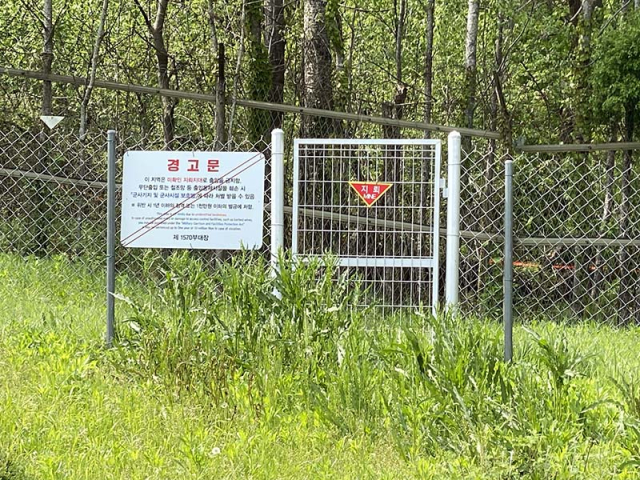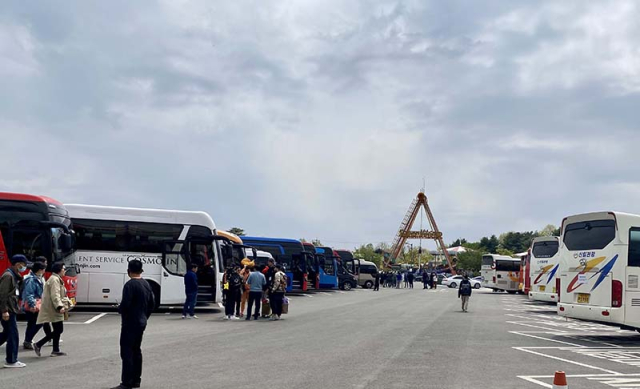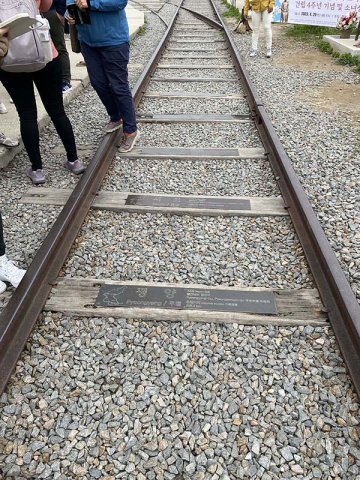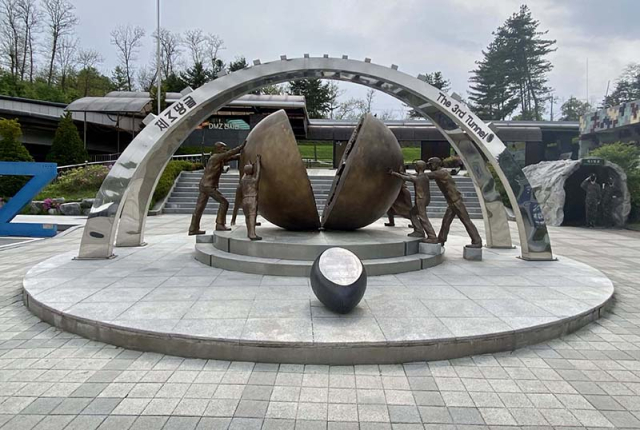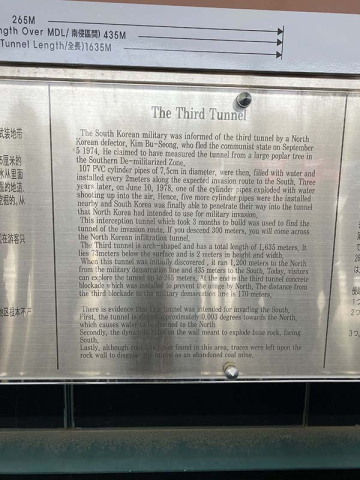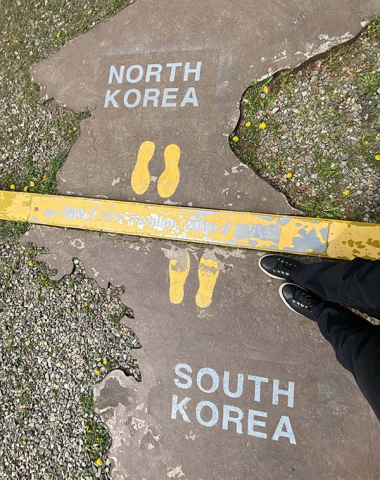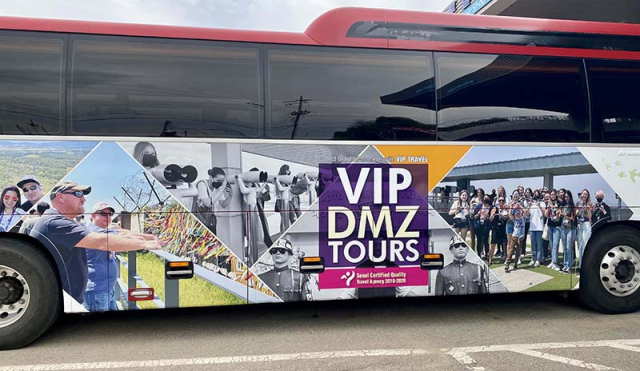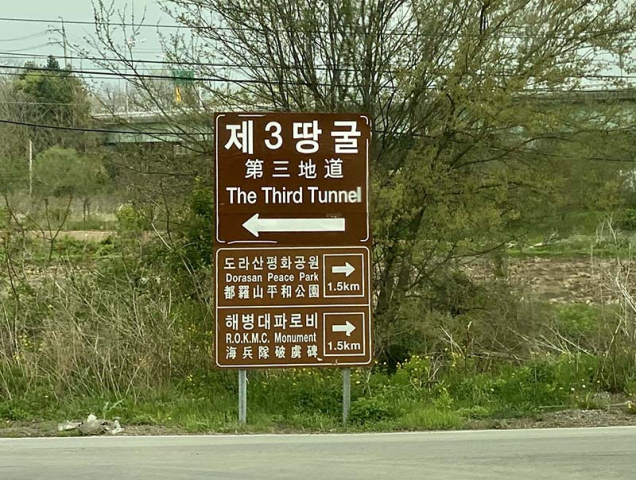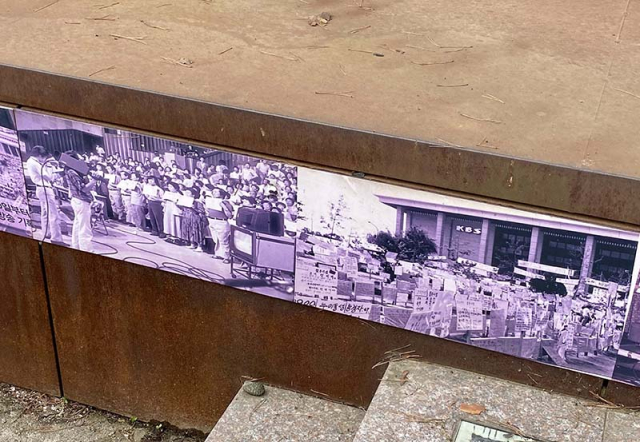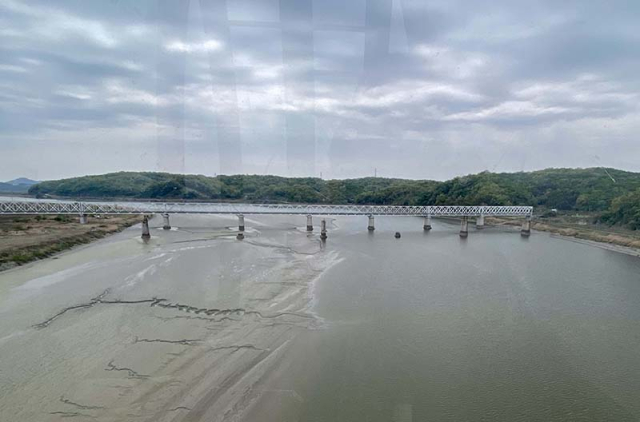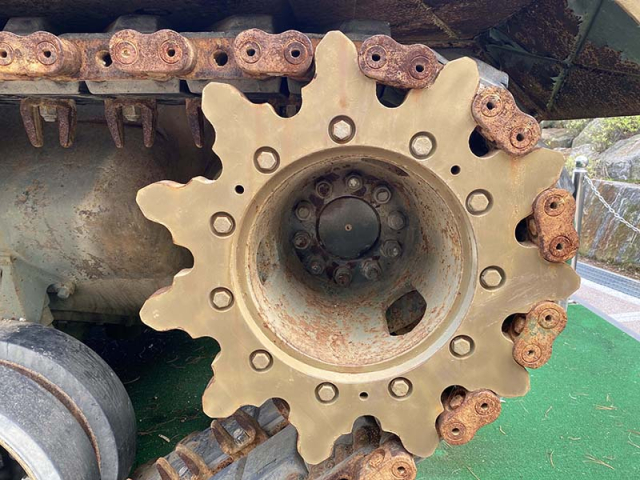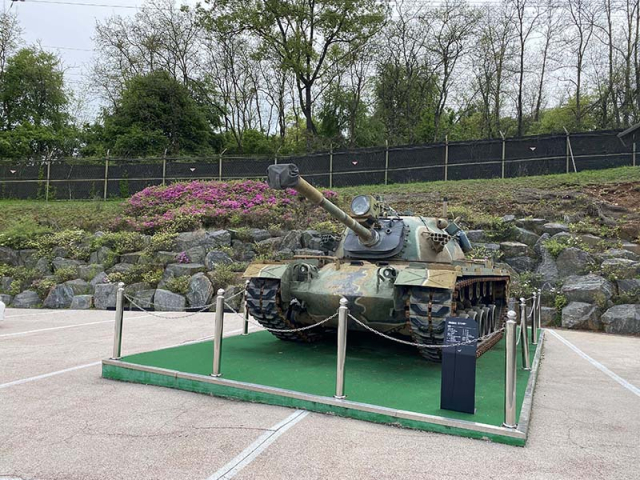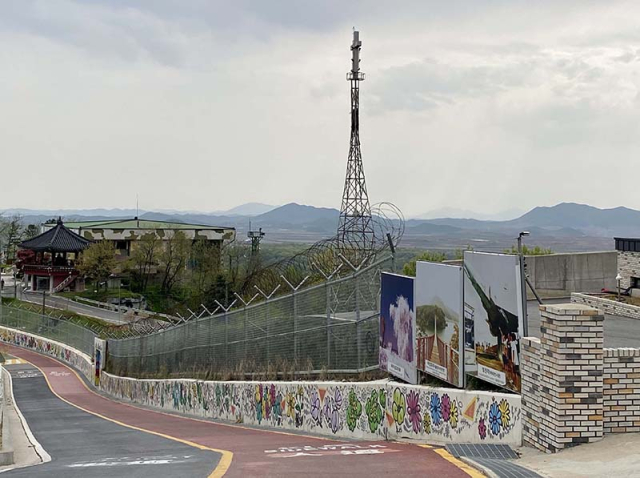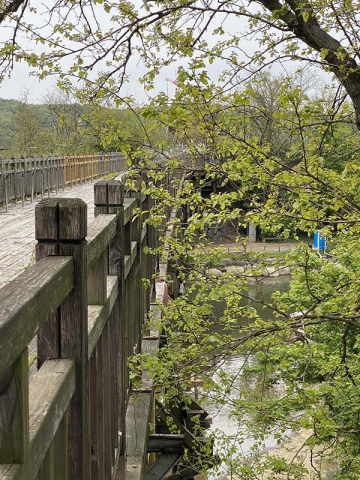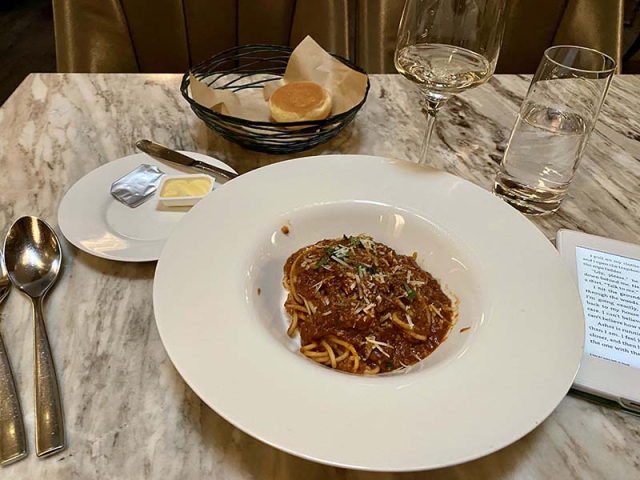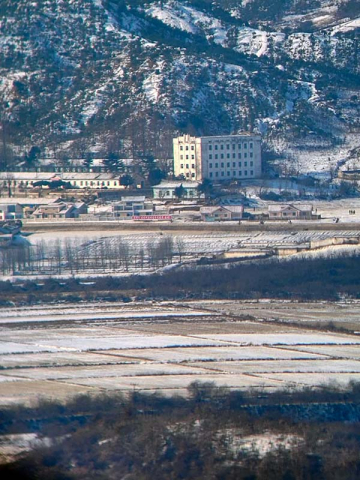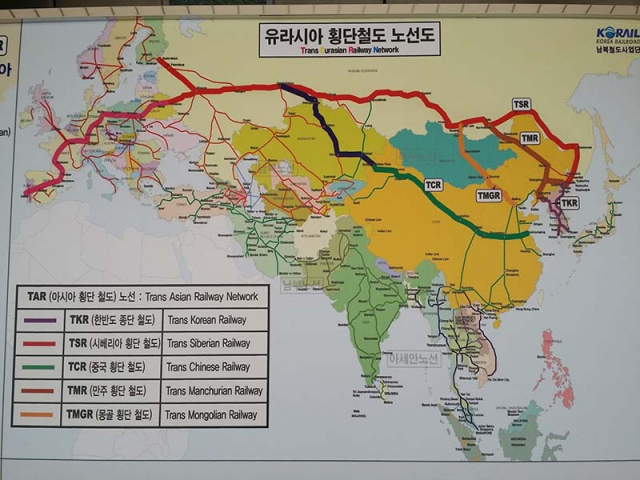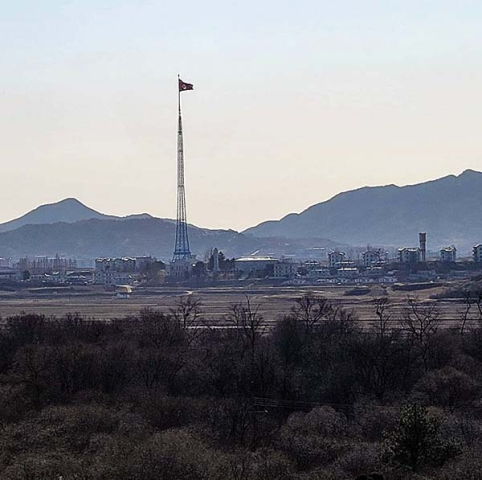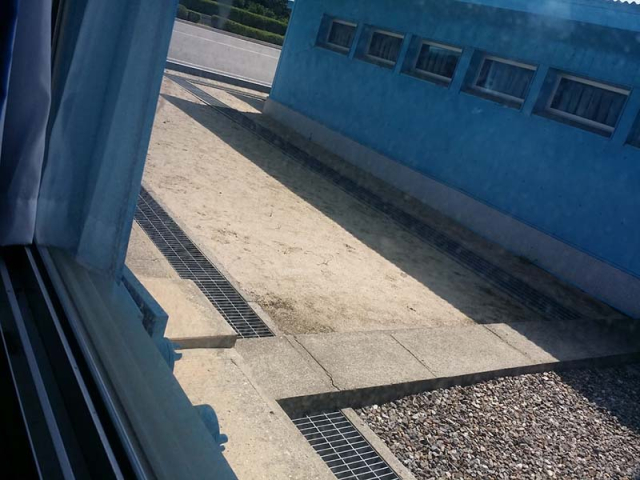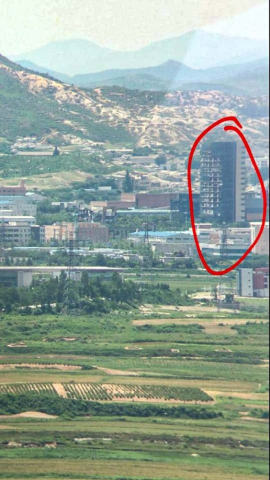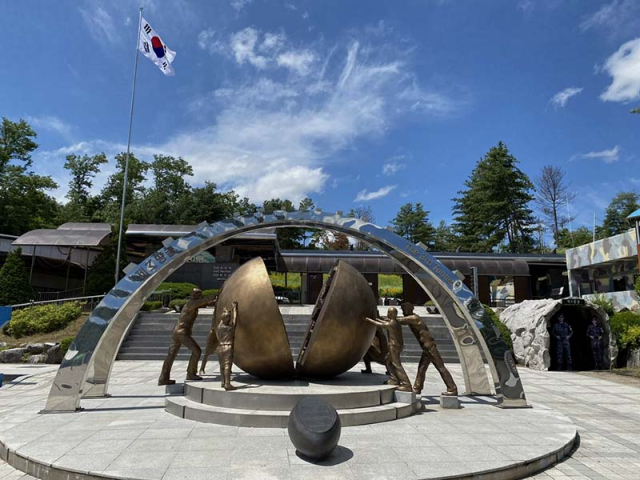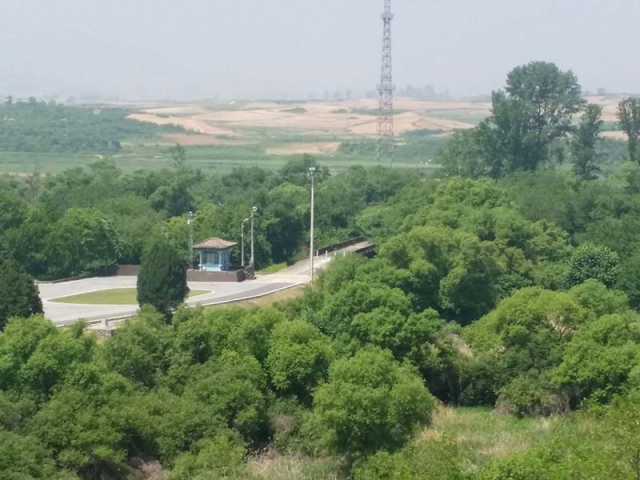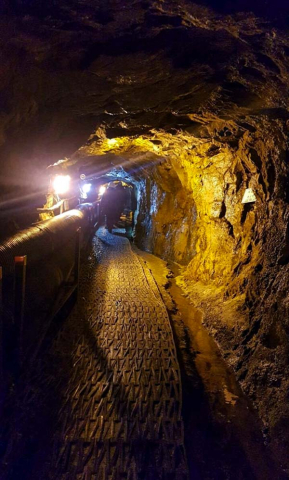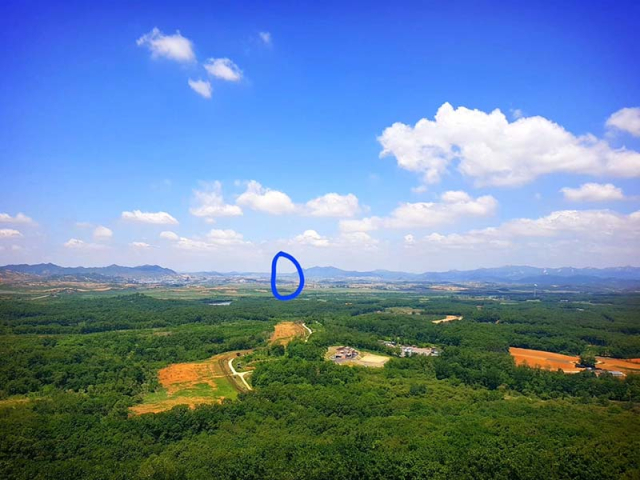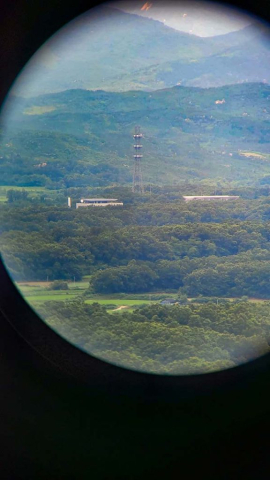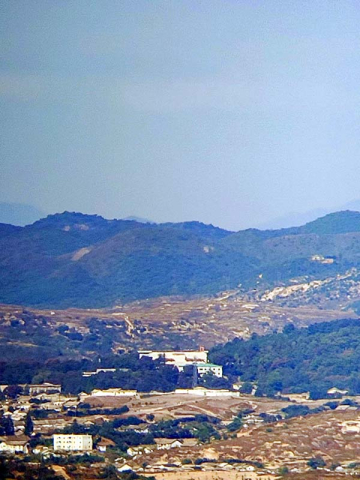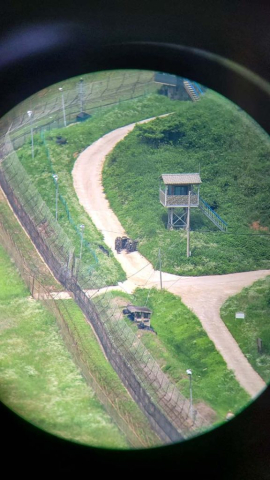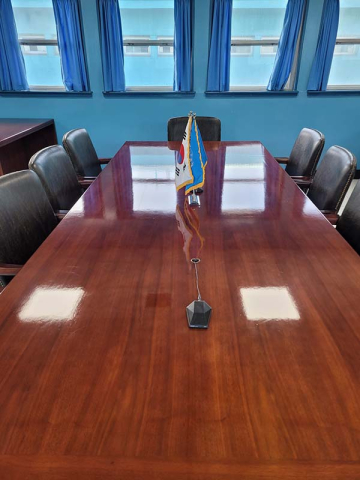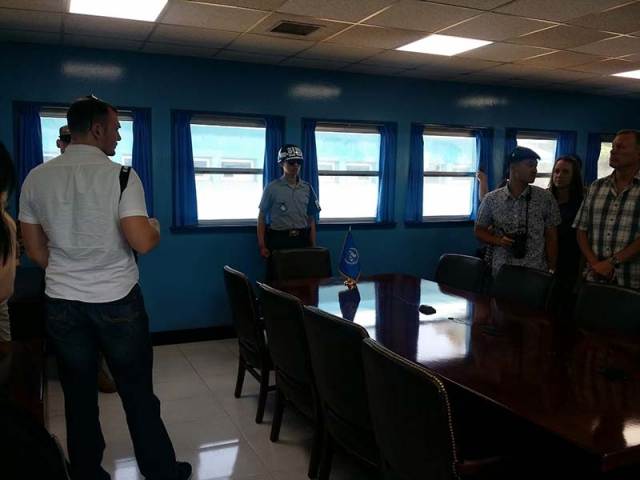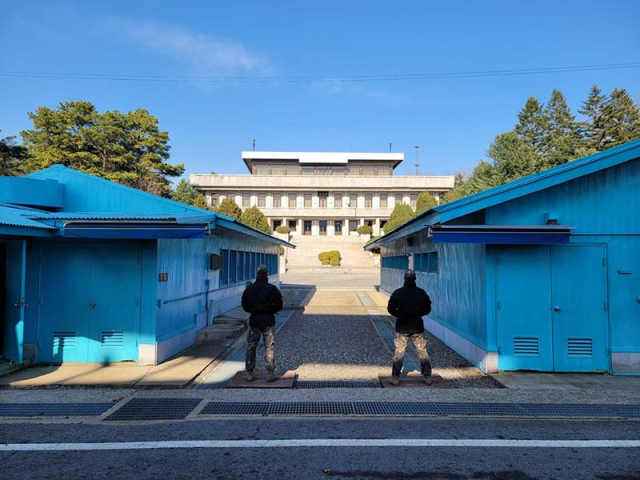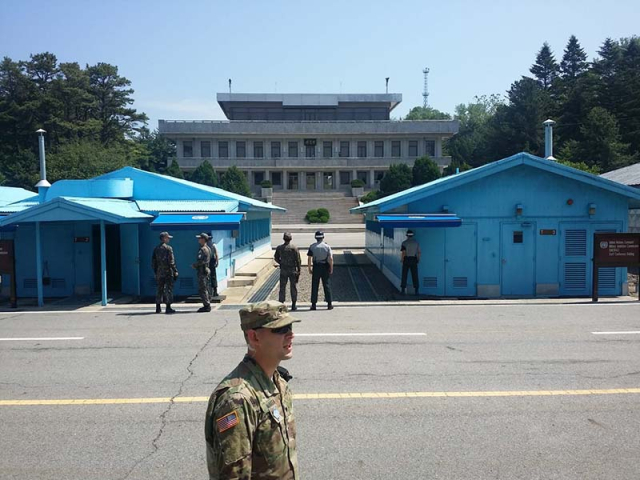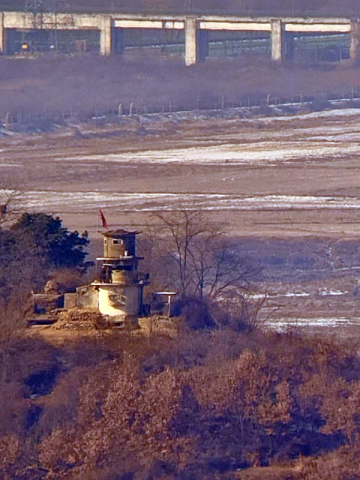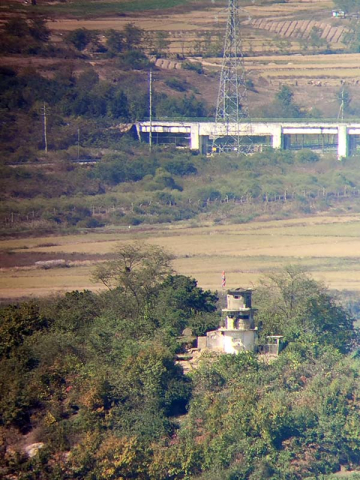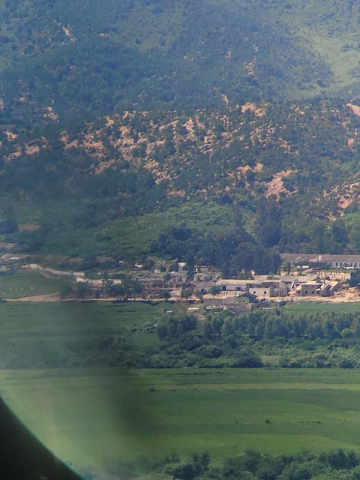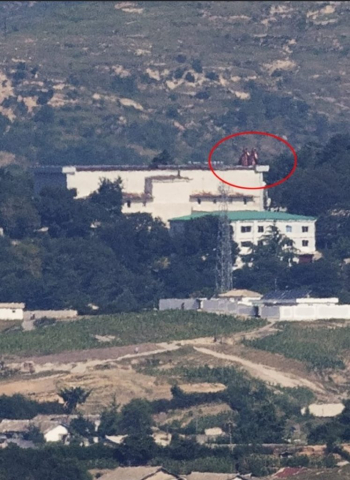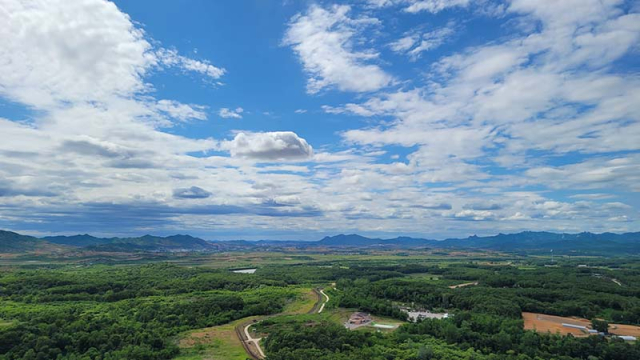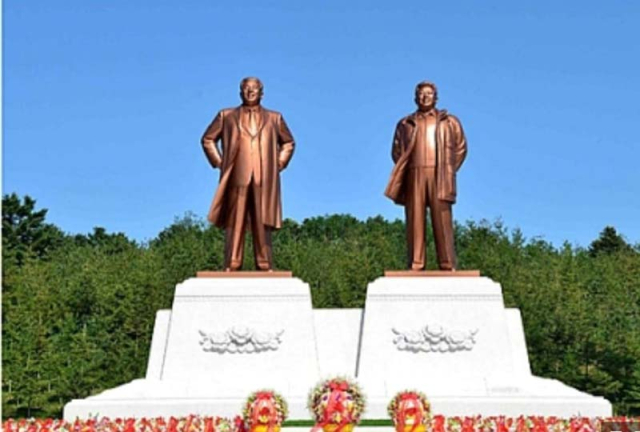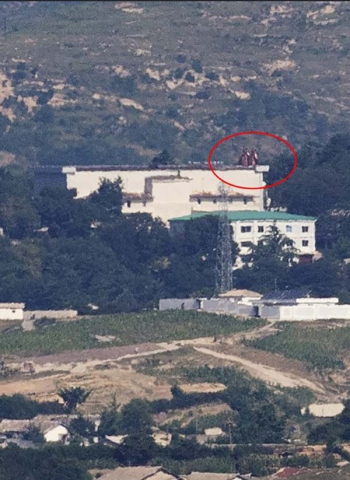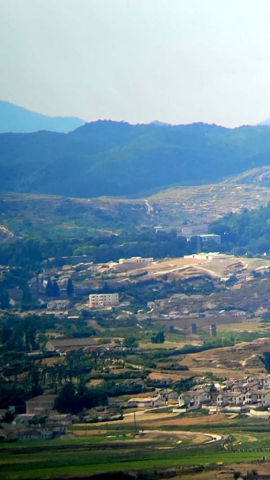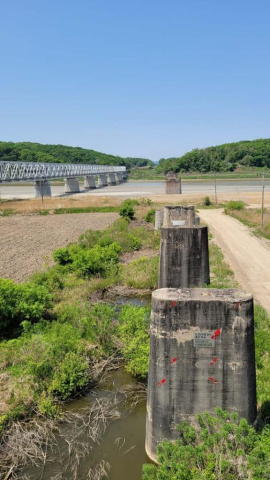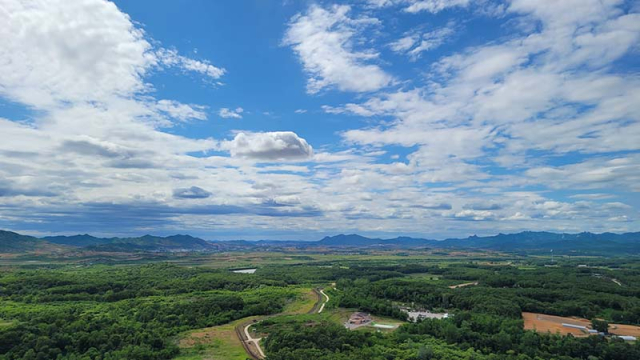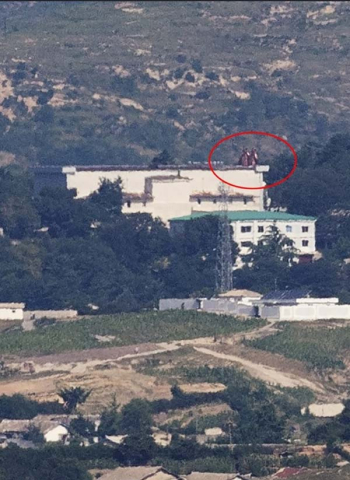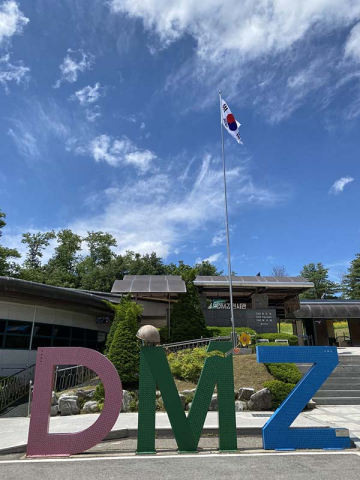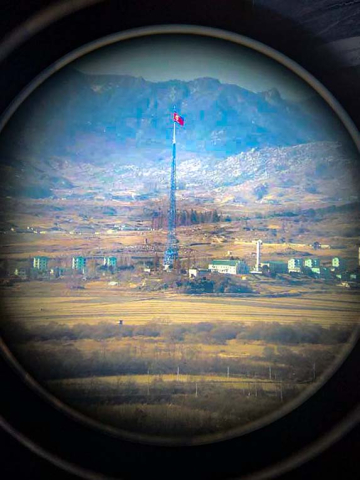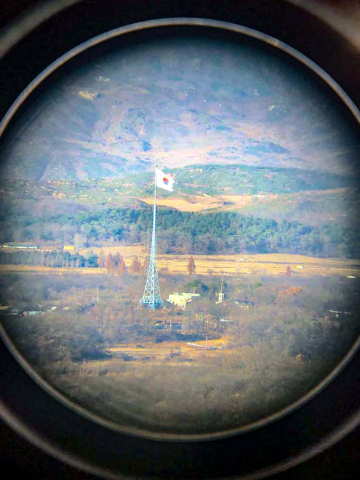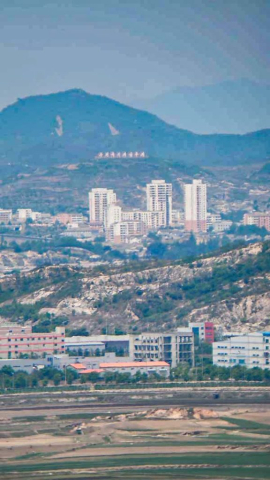Yeah, today was special. The DMZ was a very interesting place and it felt like a significant day for me. I was up early to get ready for a 9:30 departure from the City Hall/Plaza Hotel meeting point. Right away, my guide Jenny had me checked in and on a fantastic motor coach. The group was a mixed batch of folks from all over the world. The tour was in English. (Fun fact: more people speak English to each other as a second language than there are native speakers of English.)
Jenny spent the hour ride to the DMZ area explaining world history and how we got to the situation of two Koreas. I won’t explain the history since you can check Wikipedia to get yourself up to speed on the subject. I’ll just detail the progress of the day.
The tourists to the DeMiliararized Zone between The People’s Republic of Korea (DPRK) or North Korea and the Republic of Korea (ROK) or South Korea are hustled through a series of stops and activities on a tight schedule. When we arrived at the ticket booth/food court/gondola ride/theme park/campground, Jenny didn’t even have our tickets. They cannot be purchased in advance and about half the number of tickets are available each day as before Covid. We got tickets for 1 pm which gave us very little time to get food, buy North Korean currency, ride the gondola, and see the various historical sights there.
We learned about a television broadcast in 1983 that was supposed to last a few hours and actually went on for 138 days. The goal was to reunite families that had lost track of each other in South Korea after the mayhem of evacuating and escaping from North Korea. People kept showing up with signs to appear on camera with their names and hometown. The hope was to have family members see them on TV and reach out. It was a period of intense sadness for Korea but I think Jenny said a total of 10,000 families were reunited because of this extended broadcast.
Before the North tested nuclear weapons, a small group of South Koreans came across the border to work at a factory built by the South so there could be collaboration and to give some North Koreans the chance to earn a far better wage. This ended when North Korea started testing nukes and now the factory is abandoned.
There was a whole, slightly confusing story about the rail lines, past and present, bombed and newly built. There are stations on both sides of the border. Jenny said she and all Koreans deeply long for the day when they can ride a train from Seoul, through North Korea, China, Russia, and Europe to arrive in Paris. I personally recommend a flight that they are free to take any day they choose. I’ve heard that the South Koreans don’t really, really want to reunify – the burden would be financially crushing for the South. Most of the people who could still remember lost family members are gone or going. They just want Rocket Man (Jenny’s words) to behave.
I took the gondola ride across the river to a former USAF bowling alley turned into a museum, then returned a few minutes later to the food court. I ate a burger hurrying back to the bus after the gondola ride.
At our appointed time, our bus crossed the line after our passports were personally checked by two South Korean Army soldiers who came on our bus. We had our first big stop at a sort of information center. We got an explanation of the complicated territory there with the DMZ line, the 2 km buffer on both sides of the line that forms the actual DMZ, the further buffer called the civilian control area, and the farming villages that are inhabited by South Koreans. We watched an upbeat movie about the cooperation there is and has been between the Koreas.
We got back on the bus and stopped at the third tunnel the North Koreans started digging in the late 60s in violation of the truce. We had to leave all our belongings in a locker. No phones are allowed so I don’t have photos of this part of the trip but Jenny has sent me some photos I have added to my gallery. When we walked down the steep slope underground, we crossed into the DMZ. Apparently, the North Koreans were planning to invade Seoul by land in the early 70s. The South Koreans were alerted to this by a defector in 1974. This North Korean soldier decided he didn’t want to die digging the tunnels from lack of oxygen like all the other young soldiers were doing. The assignment was universally fatal. He escaped to the South and described the tunnel system. The South spent 4 years trying to find the tunnels to stop the North. Now they have one tunnel accessible to tourists. It’s a bear of a workout to see it. We walked down a very steep tunnel built by the South which intercepted the North’s tunnel. That tunnel was very small and we had to wear hard hats and bend over to travel along it. The North’s side of the tunnel is walled off three times now. Then we had a slow, grueling walk out up the 11-degree slope. I walked up slowly with Floridian John, who I’d been on a tour with the day before, and strangely ran into him and his wife again later in the week at a museum.
Next, we went to a three-story DMZ observation facility. Jenny was a real pro and told us what to expect and how to see the various sites across the DMZ in North Korea. It was really impressive. The North Koreans have completely cut down the forests on their side of the border so the clearest sign that you are looking at the North is the lack of trees. They heat their homes with wood and the trees are too easy for defectors to hide in. It’s a very bad idea to try to cross at the DMZ because of the many rows of barbed wire, guns pointed at you, and thousands of land mines laid by the US government in the 1950s. Virtually all defectors cross into China and then make their way to the South by sea or air where they are given $25,000 and lots of assistance. If you want to read a fascinating book about North Korea and a defector, check out The Girl with Seven Names.
The last stop was in a South Korean farming village that is actually in the DMZ. The soil is really fertile and ginseng, soybeans, and rice are highly prized which are grown in that area so the farmers who endure the hardships of living there are compensated by not paying taxes and their sons don’t have to serve in the military.
The farming village had a shop geared to tourists which sold their special products, sold a sort of soy ice cream and coffee, and gave us a last chance at the restrooms before the return to Seoul which took about 1.5 hours because of passport checks on the way out and Sunday-evening traffic returning to the city.
I got off the bus, looked up to see a tall Courtyard Marriott, and knew there was a meal, a glass of wine, and a knife and fork waiting for me. I was right and it felt like a nice reset after endless chopsticks and Asian food.
